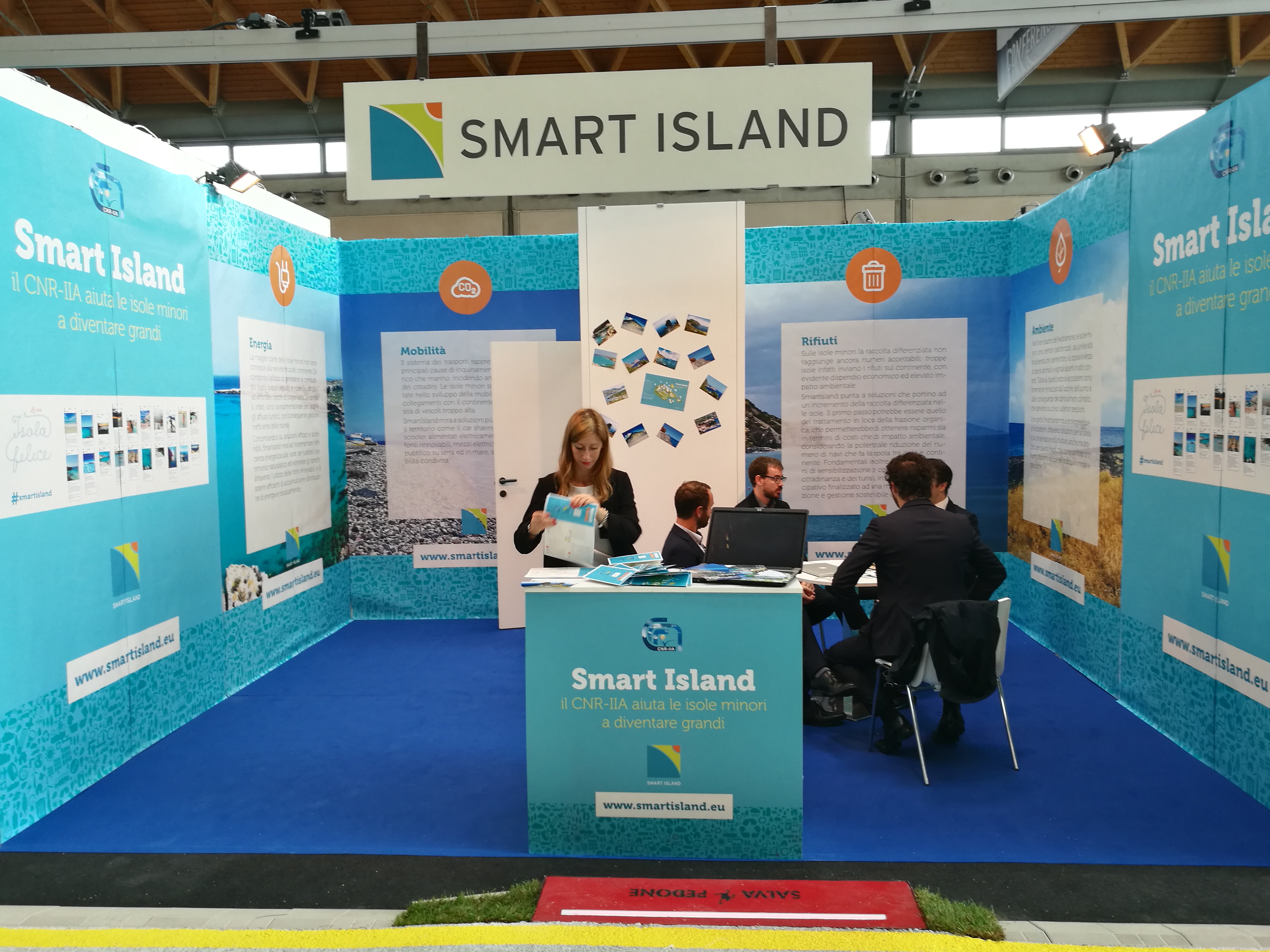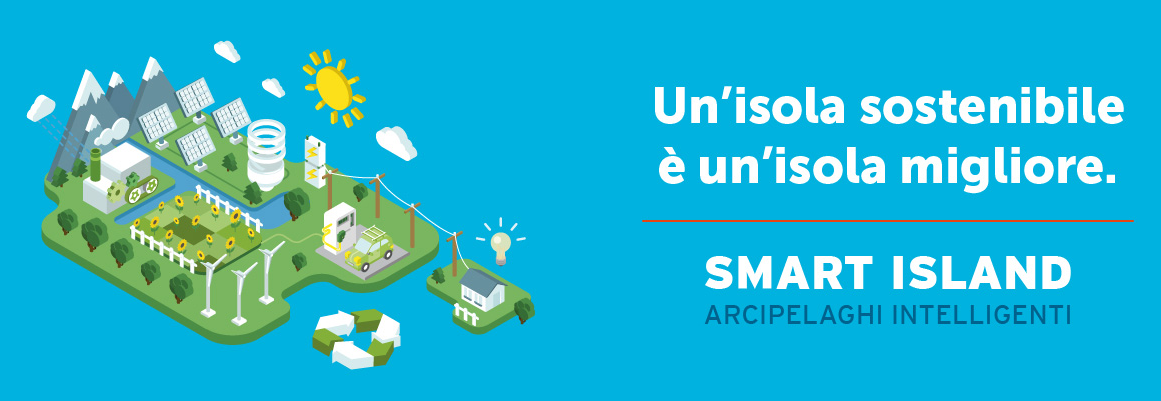
Abstract of the project
Most of the smaller Italian and Mediterranean islands are not connected to the continental electricity grid. Energy consumption is mainly electricity, for the most part associated with the residential and tertiary tourism sector. The production of electricity takes place through diesel generation parks that are largely oversized with respect to the demand for winter power (and therefore used inefficiently), to cover the summer load peaks, which are all the more marked the more the island has a vocation. tourist. The enormous costs of generation are borne in small part by the citizens, most of them by the community through the Cassa Conguagli. Similar difficulties are recorded for the waste and water cycle due to the need to optimize complex cycles in a closed environment with significant and seasonal anthropogenic pressure.
Particular attention will be given to the positive effects on the ESCOs (EXALTO and RES NOVA DIE) responsible for the implementation of the energy redevelopment plan of the island (and more generally of the islands); on the local electricity producer / distributor to whom an economic and financial plan will be presented that can demonstrate that the introduction of technologies for the accumulation, management and control of electricity produced from non-programmable renewable sources represent a business opportunity for the entrepreneur through less use of fossil fuels as well as obviously representing an innovative solution for improving the quality of life in communities. On local communities, thanks to the involvement of the regional Legambiente, particular attention will be given to maximizing the use of local labor and creating new jobs, also through integration policies for third country nationals.
The Smart Island project intends to overcome the current limits of production and distribution, highly inefficient of energy present in the minor islands of the Mediterranean and redistribute the advantages of an island smart grid to local companies and the resident population. Smart Island intends to promote the birth and development of a Social Innovation Cluster that represents a driver of sustainable economic growth of the smaller islands and more generally of the local social and national economic system by overcoming existing barriers and exploiting all the potential of technology. and ICT.
The energy distribution and smart mobility system will allow the emergence of widespread entrepreneurship in the area and the training of high-level technicians who will be necessary to manage the transition of the energy system. The new smart Island will feature widespread energy production systems that will leverage the natural and renewable resources present in the area; the phases of installation of the technologies will involve the local population and will allow the training of professional figures necessary to implement the project. It will also be possible to use and train non-Italian citizens present in the territory of Lampedusa, creating the possibility of replicating.
The involvement of the population will be important for the success of the smart grid; to this end, creation of the Information System and Enabling Services, the Smart Community intends to exploit all the potential provided by citizens' networking in order to make them participate in the transformation of the island's energy and mobility systems. The platform will allow the sharing of energy and environmental information and will favor interactions between citizens, economic operators and the public administration in the name of transparency and participation. The cyber (e) -infrastructure will have the task of collecting energy and monitoring data, assessing their quality, activating advanced web services and ensuring interoperability in the exchange of information. The advanced web services will allow the active participation of citizens through the development of dedicated smartphone applications. The state of the environment in real-time and near-forecast can be used by the local population and tourists.
Environment. The participation of international partners both from the business world (Siemens, ElectraTherm Inc.) and from the world of research (Polytechnic of Turin, University of Athens) will allow the comparison on the island's smart grid system, bringing to the project a high level of technical innovation and scientific.
The complete implementation of the model aims to fully exploit the vocation of marine area and protected natural area of the smaller islands, eliminating or reducing polluting sources, promoting an image of Isola Verde and strengthening on the one hand the tourist offer and other by stimulating a demand for tourism not only in summer and mass but also "out of season" by focusing on international naturalistic tourism (trekking, bird watching, whale watching, biking, etc.).
The project will be divided into the following ORs:
• OR1: TRNSYS modeling current system: scenario base;
• OR2: Smart Grid design and monitoring and control system;
• OR3: Definition and simulation of the 50% RES scenario and fossil free scenario: mobility and energy;
• OR4: TRNSYS simulation of 50% RES scenarios and fossil free scenarios: mobility and energy;
• OR5: Environmental status assessment and analysis of related benefits;
• OR6: Analysis of the economic impacts of the identified scenarios: local producer / distributor and start-up;
• OR7: Waste management system
• OR8: Identification, analysis and elaboration of strategies for removing technical, administrative barriers, etc.
• OR9: ICT information system and services enabling the Smart Community
• OR10: Involvement of local companies and administrations
• OR11: Replicability of the results in the other smaller Italian and Mediterranean islands
• Elaboration of operational and project proposals for the removal of barriers to the diffusion of RES plants;
• Design of an island smart grid: integration of renewable technologies, DSM interventions, electric mobility on the island, changes to the distribution system (integration of storage and control platforms);
• Elaboration of a business plan to be proposed to the grid operator for the implementation of the first island Smart grid in the Mediterranean;
• Proposed amendments to the SELIS Spa electricity grid operating regulations;
• Interaction with the Institutions for the modification of the reporting and reimbursement rules of the grid operators of the islands;
• Design of a monitoring, control and management system of energy flows capable of accompanying the implementation process of the smart grid over time from the current Fossil scenario to the 100% renewable scenario; the monitoring system will have to collect data relating to flows of energy, matter, emissions;
• Modeling of the island's energy system through the use of non-stationary models (TRNSYS);
• Evaluation of the environmental / social benefits associated with the implementation of the project
• Extension of the model to the other smaller Italian islands.
• CNR Institute on Atmospheric Pollution (CNR_IIA)
• Res Nova Die http://www.resnovadie.com/
Lucia Paciucci
Emiliano Zampetti
Paolo Papa
Alessandro Mei
Cyrus Manzo
Flavia Liotta
Marco Secret



